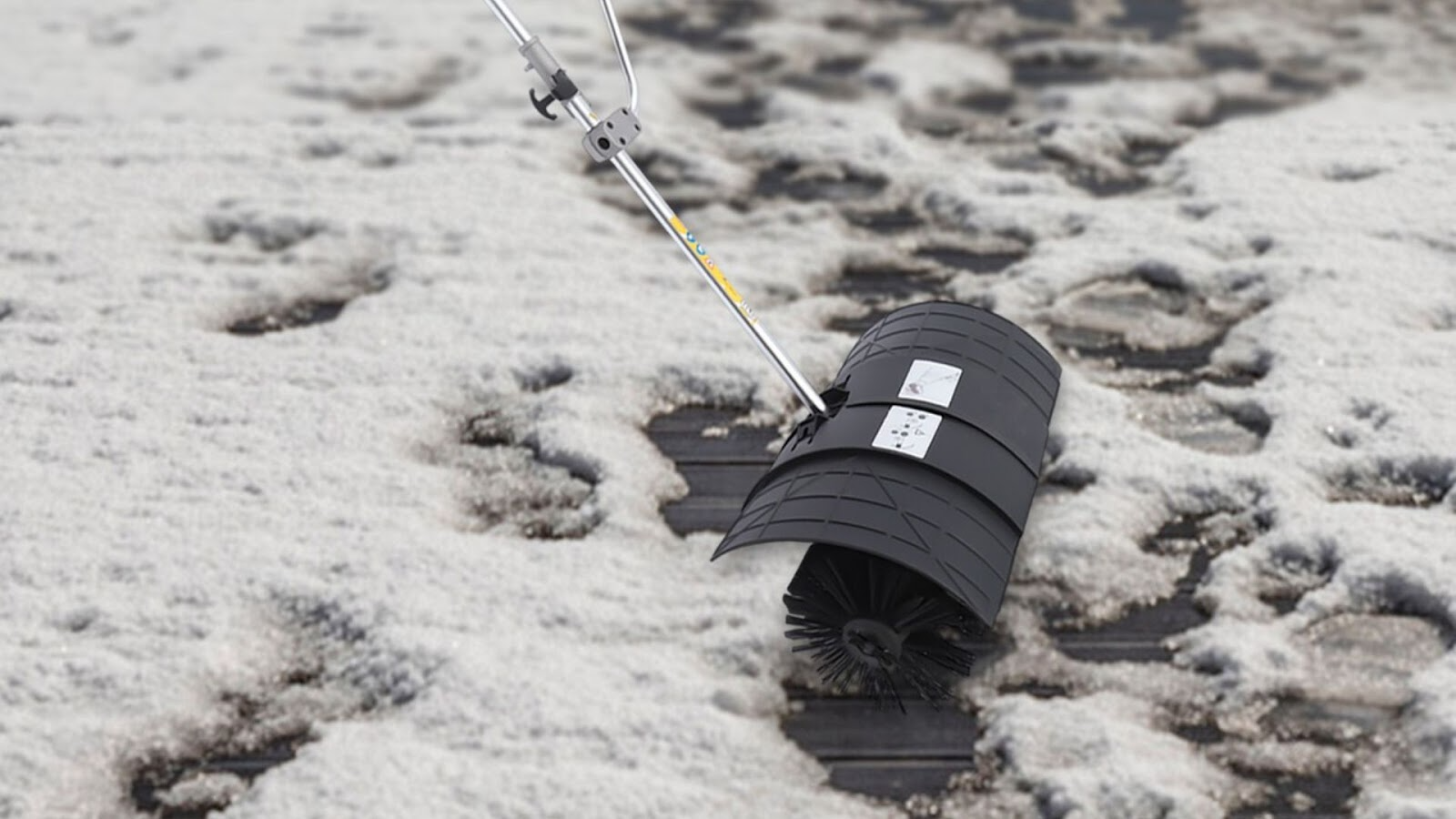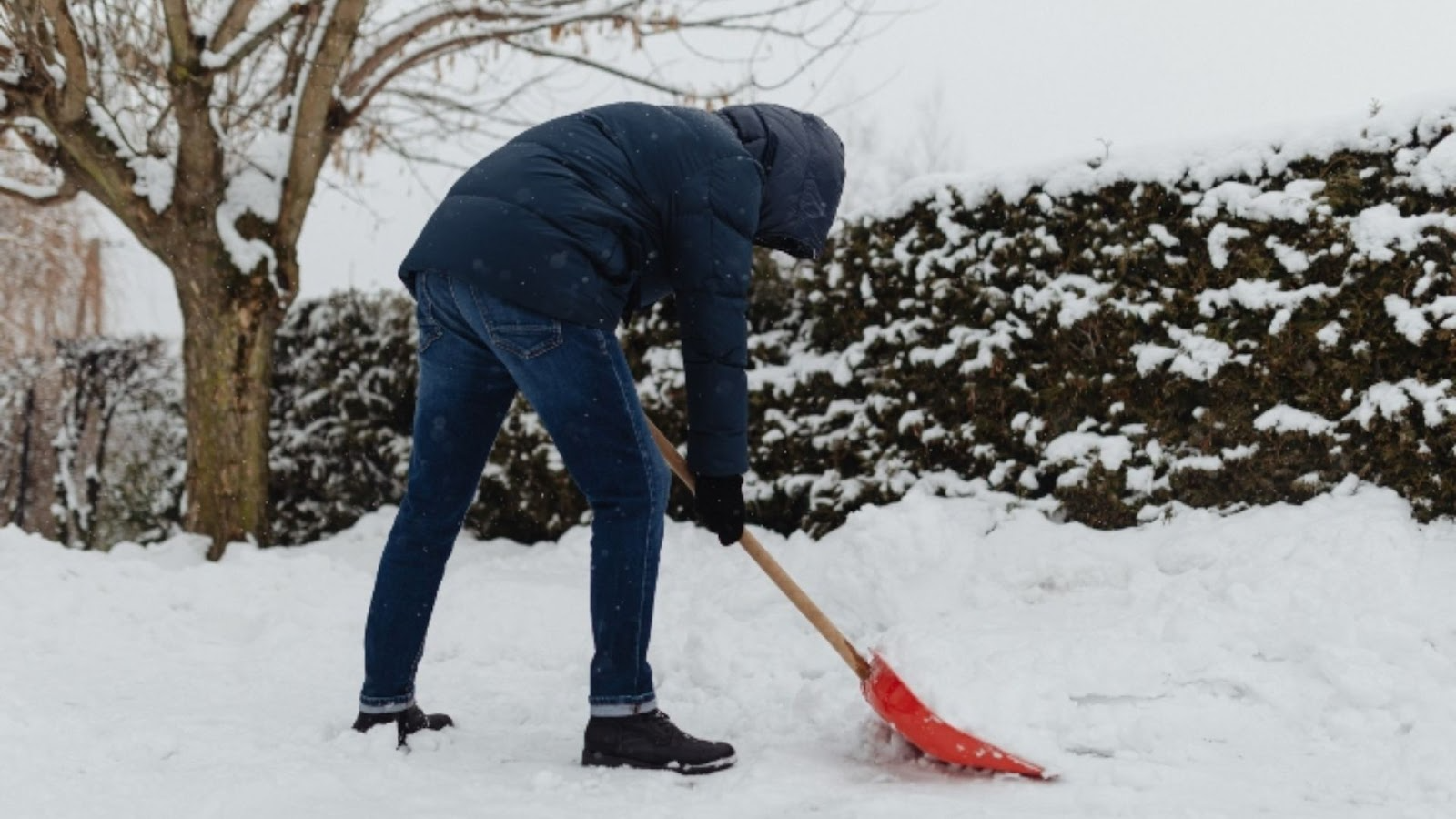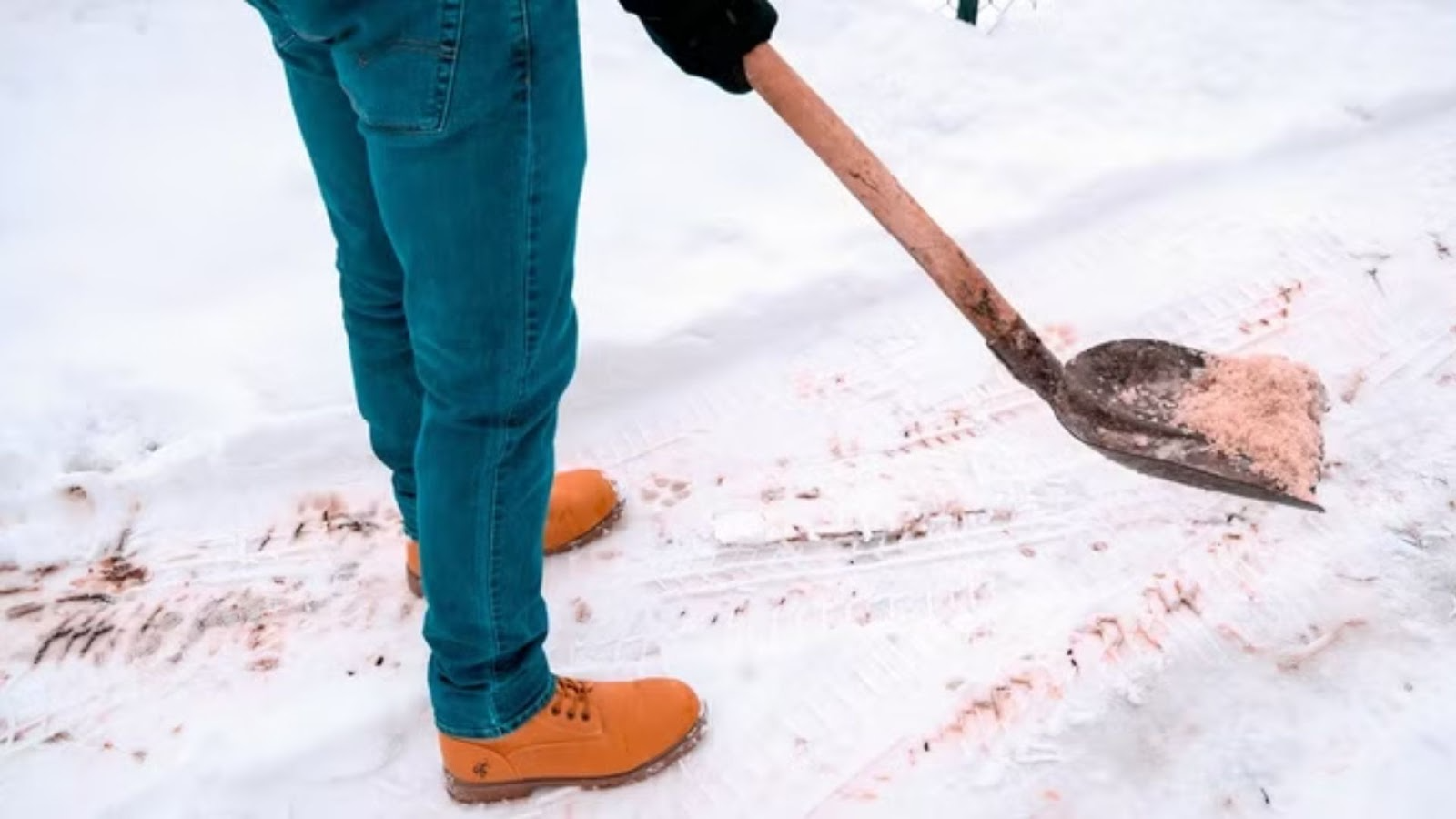When the snow finally melts, many homeowners notice yellow patches, flattened grass, or bare spots where healthy turf once grew. These problems need your attention; otherwise, your lawn can quickly lose its charm.
Lawn sweeping and early recovery steps help clear winter debris, prevent fungal issues, and give grass room to grow strong again.
This guide walks you through seven practical steps designed for the post-snow period. While some lawns might recover naturally, most need targeted care to regain their color and density.
If you make focused efforts now, you can bring faster regrowth and a greener, healthier lawn all spring.
1. Start lawn sweeping only after the ground fully thaws to avoid compaction and root damage.
2. Rake gently, dethatch selectively, and aerate compacted areas to restore airflow and nutrient flow.
3. Overseed thin patches and apply slow-release fertilizer to boost spring growth and crowd out weeds.
4. Address snow mold, salt damage, and bare spots early to prevent long-term setbacks.
5. Prevent future damage through fall aeration, shorter final mowing, debris removal, and lawn-safe deicing.

Taking the proper steps after the snow in your lawn melts can mean the difference between a patchy, struggling lawn and one that greens up quickly. Follow these seven focused steps to set your lawn up for a strong spring recovery.
Starting cleanup too early can do more harm than good. When the soil is still soft from thawing, walking or raking can compact it and damage tender roots.
Check the ground by walking gently across the lawn. If your footprints leave deep impressions or feel spongy underfoot, give it more time to firm up. Acting too soon can create ruts that are difficult to rectify later and may hinder root development.
Patience here pays off. Waiting until the lawn surface is stable provides a better foundation for later efforts, such as raking, dethatching, and seeding.
Pro Tip: Pick a few shaded and sunny spots to test soil firmness. Shaded areas thaw more slowly, so waiting until both are firm helps avoid uneven results.
Once the ground is firm, do a careful walk-through of your yard. This step helps you understand precisely what your lawn needs.
Look for signs of:
Carry small flags or garden markers to tag problem areas as you go. This makes it easier to plan your next steps without missing anything.
At this stage, it’s essential to set realistic expectations. Minor mold patches might clear up naturally as temperatures rise, but severe snow damage, compaction, or large bare spots will need targeted repair.
When the surface has dried, begin light raking to clean and wake up the lawn. This first sweep is not aggressive. It focuses on removing winter buildup and letting the grass breathe again.
Use a soft leaf rake to:
Strictly avoid heavy raking at this stage. The goal is to loosen, not tear.
This simple step enhances airflow, exposes the soil to warmth, and facilitates the emergence of new growth.
Pro Tip: Wait until midday for raking if mornings are damp. This prevents clumping and reduces the chance of damaging wet grass.
A little thatch is good because it insulates roots and retains moisture. Too much of it acts like a barrier. If the layer is thicker than about 1.25 cm (roughly half an inch), it can block water and fertilizer from reaching the soil.
You can check by cutting out a small plug of lawn and measuring the spongy layer between the soil and grass.
If it is too thick, consider the following steps to dethatch your lawn:
Do not dethatch unnecessarily. Overdoing it can stress your lawn and slow spring recovery.
Winter often leaves soil compacted, especially along paths, driveways, and play areas. Compaction blocks oxygen and water from reaching the roots, which stunts growth.
Core aeration is the best fix. It removes small plugs of soil, creating holes about 7 to 10 cm deep. This gives the roots space to expand and improves drainage.
The best time to aerate is late spring, once the grass is actively growing. You can rent an aerator from a garden center or hire a professional lawn care service. Once done, lay the plugs on the lawn to break down naturally.
These plugs will then return nutrients to the soil and improve the structure over time. If your lawn feels hard underfoot or water pools on the surface, this step is essential.
Once the lawn is clean and aerated, it is time to stimulate new growth. Overseeding and fertilizing work together to fill in thin spots and strengthen the turf.
For overseeding, spread a thin layer (approximately 3 mm) of enriched topsoil over bare patches.
Moisture Matters: Keep the soil consistently damp for two to three weeks to support germination. The ideal temperature range for seed growth is 10–25 °C. If a cold snap occurs, germination may be delayed, so adjust your watering schedule accordingly.
Thicker turf grows stronger and helps crowd out weeds before they get established.
Pro Tip: Lightly roll the lawn after overseeding to help distribute the seed evenly. This improves seed-to-soil contact and boosts germination rates.
Mowing plays a key role in post-winter recovery. Start when the grass reaches mowing height, not before.
Here are some pointers to remember for an efficient mowing routine:
Pro Tip: Regular monitoring is just as important. Keep an eye out for early signs of weeds, pests, or fungal patches so you can address them promptly. Consistent care at this stage sets the tone for the rest of the season.
By moving through these seven steps in order, you clear away winter’s damage, rebuild the lawn’s structure, and give it the best possible start for spring.
Once the basics are in place, it’s easier to spot the lingering problems that can slow your lawn’s progress.
Also Read: Optimal Height for Cutting Grass Across Seasons

Even after a thorough cleanup, some winter damage can persist and hinder your lawn’s recovery. Identifying and addressing the following issues early helps prevent more significant problems later in the season.
Snow mold often appears as gray or pink patches that stick out against green grass.
To manage snow mold, gently rake matted patches to improve airflow and help the grass dry.
For severe pink mold, remove the damaged material and overseed once the soil has warmed.
De-icing salts from sidewalks and driveways can seep into the lawn, leaving brown, burned edges.
If patches stay thin, rake lightly, add a bit of fresh topsoil, and reseed.
Also Read: Best Soil Amendments for Lawn Growth: Improve Soil Health Naturally
Some spots simply don’t bounce back on their own.
Here are some steps to manage bald patches or uneven growth:
If water pools on the surface or the soil feels hard underfoot, compaction may still be an issue.
Addressing these problems now gives your lawn a clean slate to thrive through spring and summer.
To top it off, you might want to take steps that prevent these problems from developing in the first place.

Repairing damage after snow melt is important, but preventing it in the first place makes spring cleanup faster and easier.
Here are a few smart steps in the fall and early winter that can protect your lawn throughout the cold months:
Leaves, branches, and leftover clippings can trap moisture, creating ideal conditions for fungus and pests.
Here's what to do:
Traditional rock salt damages grass and soil. Switching to lawn-friendly alternatives can make a noticeable difference by spring.
Where you pile snow matters, because large snowbanks take longer to melt, keeping the grass underneath wet for extended periods.
Taking these preventive steps in the fall protects your lawn through winter and reduces the amount of work needed once the snow melts.
A clear plan and timely action can help your lawn recover more quickly and prevent problems from accumulating. For many homeowners, that’s where expert help makes the difference.
Percy’s Lawn Care has the experience, tools, and seasonal know-how to handle tough issues like snow mold, soil compaction, and bare patches quickly and correctly.
Our team focuses on practical solutions that restore your lawn’s health and make spring recovery smoother.
Ready to give your lawn the best possible start? Contact Percy’s Lawn Care today, and let’s get your yard thriving this season.
1. What causes snow mold, and how serious is it?
Snow mold develops under long-lasting snow cover. Gray mold usually affects only the blades and recovers naturally, while pink mold can damage roots and may require raking or reseeding.
2. When should I rake or aerate to fix post-snow damage?
Start raking once the ground is firm and the surface has dried. Aeration is most effective in late spring when grass is actively growing.
3. Can my lawn recover naturally from snow mold?
Mild cases often disappear as temperatures warm and grass begins to grow again. Severe patches may need light raking, aeration, or overseeding.
4. How do I treat salt damage along sidewalks and edges?
Flush affected areas thoroughly with water to push salts deeper into the soil. Apply gypsum to improve soil structure, then reseed if the grass remains thin.
5. Why is compaction a problem after winter, and what can I do to fix it?
Snow, ice, and foot traffic compress the soil, restricting air and water flow. Core aeration opens pathways for roots, oxygen, and nutrients to circulate again.
6. How much should I fertilize after snow melt?
Use a light application of slow-release, high-nitrogen fertilizer once the grass is actively growing. Avoid heavy early fertilization, as this can exacerbate fungal problems.
7. Do I need to hire professionals for post-snow lawn care?
Many homeowners can handle basic cleanup, but professional help is valuable for severe mold, deep compaction, or widespread thinning. Experts can accelerate recovery and promote long-term lawn health.